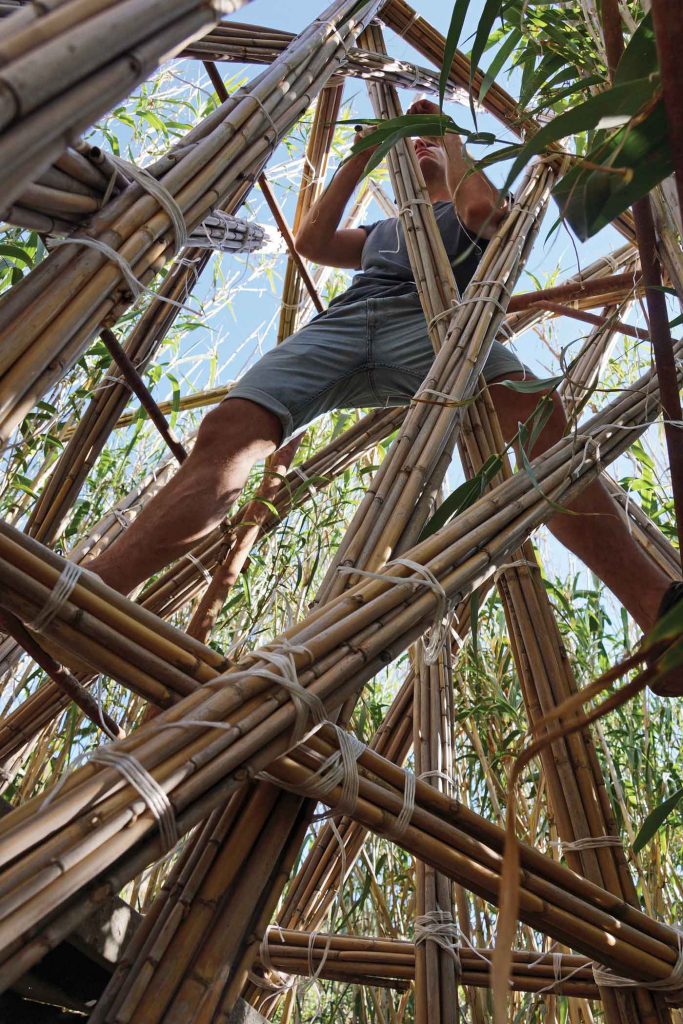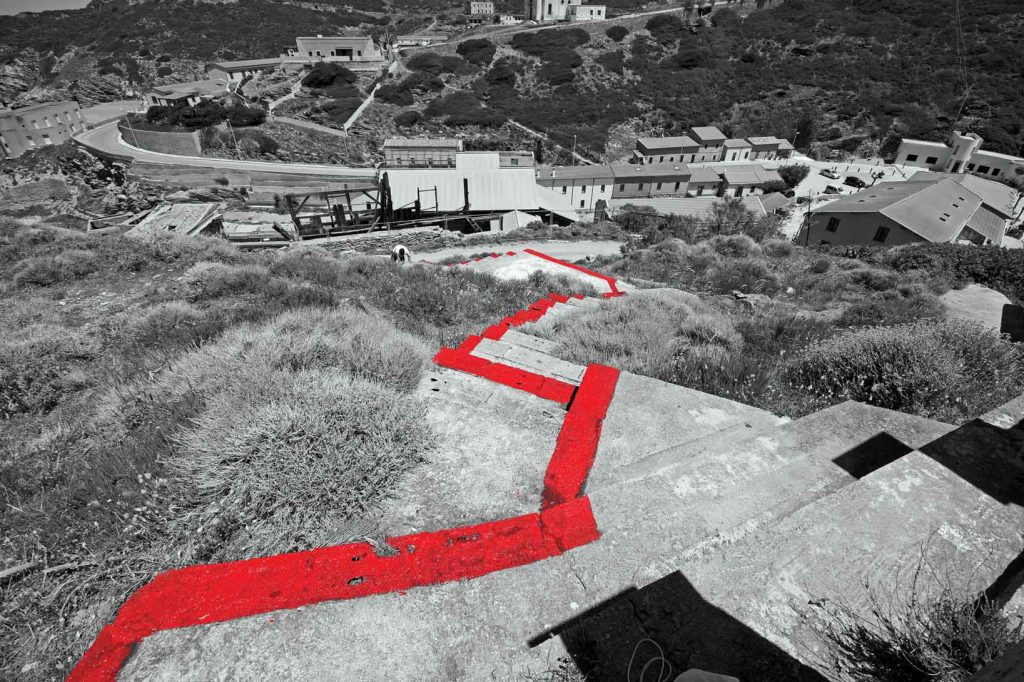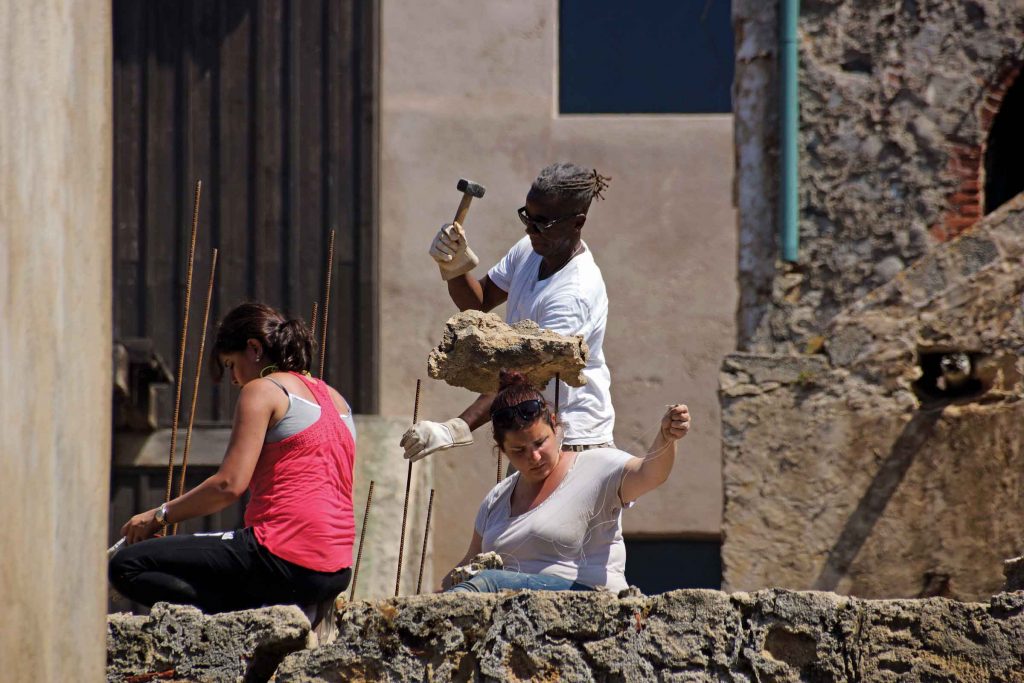LANDWORKS WORKSHOP
A fruitful way to reevaluate cultural landscapes.
Nowadays, as landscape architects, we are called to manage complexity, made by crossing confused fluxes of people, goods, information and energies that provokes irreversible changes affecting our planet.
In this context, the landscape itself becomes the unintentional protagonist suffering the imminence of the events.
Among the swirling whirl of these flows and changes, I think that a really important and in some how “salvific” attitude , would be to try to rediscover the sense of the places: reading trough the different layers that compose the sophisticated mosaic that makes the place itself, and from the deeply understanding of its genius loci 1 in order to valorize and manage the new cultural landscape in its complexity.
Doing this, it will be fundamental to understand the deep sense of the quite abused word “sustainability”, to learn how to manage the landscapes together with either locals or temporary inhabitants.

LandWorks-Sardinia 2016 Edition – Masua and Nebida | 4 Elements + 12 Monkeys by Pedro Camarena Berruecos, Christiane Sfeir, Bachar El Amine, Mimì Coviello and Parkours and performing teams.
Photography: Annacaterina Piras
So, it will be strategically important to test discipline’s boundaries, from a multicultural and pluridisciplinary approach, trying to find as much as possible an interaction with the other correlated topics as art, design, architecture, as well as anthropology and sociology; together with science, biology, geology, among others.
Our role as educators is to empower students… and support them to be able to reevaluate the contemporary cultural landscapes in order to create a new generation of “landscape facilitators”.
Also it would be important to take in consideration the politics, international cooperation and environmental and human resources management studies; which could help in shaping a new perspective inside our traditional practice.

LandWorks-Sardinia 2016 Edition – Masua and Nebida | 4 Elements + 12 Monkeys by Pedro Camarena Berruecos, Christiane Sfeir, Bachar El Amine, Mimì Coviello and Parkours and performing teams. Photography: Andres Faggioni
From this perspective, it could be possible to stimulate and activate a new focus that approaches the traditional landscaper toward a figure of a “landscape’s facilitator”, transforming the landscape architect into a sort of mediator between all persons interested in the landscape: be they local people, temporary communities, local Administrations, Civil Protection, forest rangers or even Military Forces.
At this time, I think that we need to look for a different method, as well as a different way of making school of landscape architecture.

LandWorks-Sardinia 2015 Edition – Argentiera | We don’t mine by Ferdinand Ludwig and Sergio Sanna.
Photography: Annacaterina Piras
It is crucial to develop a training model for the discipline of Landscape Architecture, encouraging students to experiment new ways not only during the approach to the design phase, but even more before putting together rigorous analyses.
I believe that our role as educators in order to create a new generation of “landscape facilitators”, is to empower students developing critical frameworks and support them to be able to reevaluate the contemporary cultural landscapes.

LandWorks-Sardinia 2015 Edition – Argentiera | Particules Élémentaires by Henri Bava and Stefan T.
Photography: Annacaterina Piras
An open and implementable formula, is the experimental workshop called LandWorks-Sardinia, founded in 2011 inside the Master in Mediterranean Landscape Urbanism, DADU Department of Architecture, Design and Urbanism of University of Sassari, directed by Stefan Tischer.
I am co-founder of the LandWorks Program and i have been Scientific Coordinator of the Workshop for the last six editions.

LandWorks-Sardinia 2016 Edition – Masua and Nebida | Route To Roots, Roots To Route by Ferdinand Ludwig and Sergio Sanna.
Photography: Annacaterina Piras
Based in the ancient Sardinia island, in the middle of the Mediterranean sea, it is basically an international operative program to search new ways to analyze, underline, revitalize and manage the cultural contemporary landscapes, engaging internationally well-known practitioners, from very different disciplines as landscape architecture; dance, music, art and architecture; who perform, in a quite short time, ephemeral installations.
They do this collaboratively with diverse international students, with whom they create shared, operative and spontaneous works through a pluralist disciplinary and multi-cultural approach.

LandWorks-Sardinia 2016 Edition – Masua and Nebida | Purple Rain by Stefan Tischer and Sarkis Kourjian.
Photography: Andrea Faggioni
The goal of the workshop is to train students in landscape architecture through a workshop “on site”, trhough manual, “hands-on” and participatory activities, such as planting, digging, the building of small artifacts and landscape installations.

“The Green Wall”: Christian Phongphit. Photography: Annacaterina Piras
Since the first edition held in the 2011, landscape architects, environmental designers and artists have explored designed and created site-specific ephemeral installations inside Sardinia´s Mediterranean landscape.
The places of interest for the LandWorks Program, are generally abandoned or compromised inside of the contemporary landscape contexts on the Mediterranean area.
Similarly, the artistic environmental installations are mostly ephemeral and always made with natural material, or waste found on site.

“Red Ribbon”: Pedro Camarena Berruecos + Bachar El Amine Photography: Andrea Faggioni
Some of the installations produced in collaboration with the local community have been able to withstand time and are still visible today, simultaneously cultivating local memory for the inhabitants as well as for new visitors.

“Substraction, Extraction”: Walter Hood.
Photography: Annacaterina Piras

“The moon and the death”: Roberto Zancan + Francesco Cucchiara.
Photography: Andrea Faggioni
REFERENCES
1 For the Romans it was “genius” or protective spirit of the place. Later the term was used by the English Alexander Pope in the eighteenth century to refer to the identity of a place.








